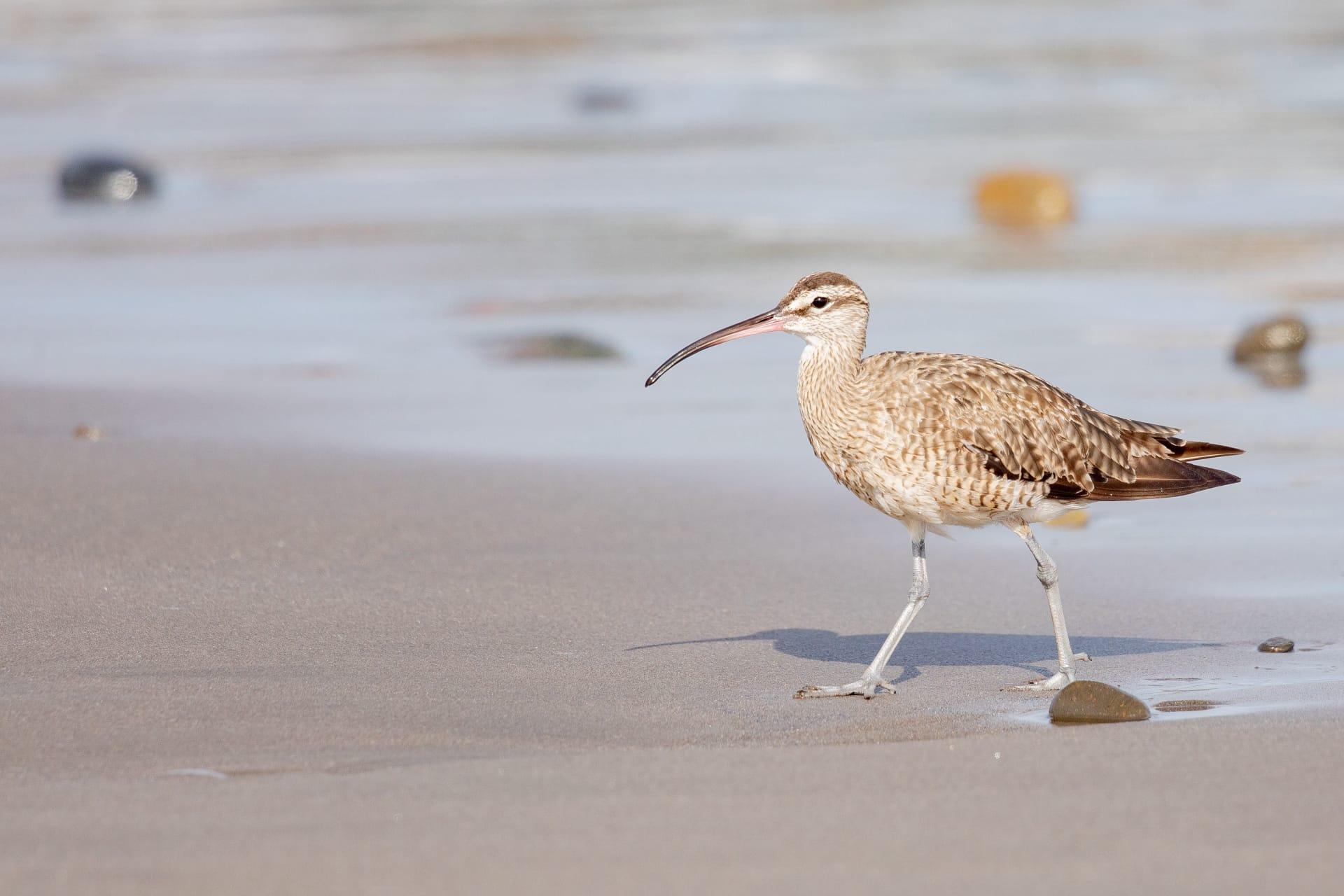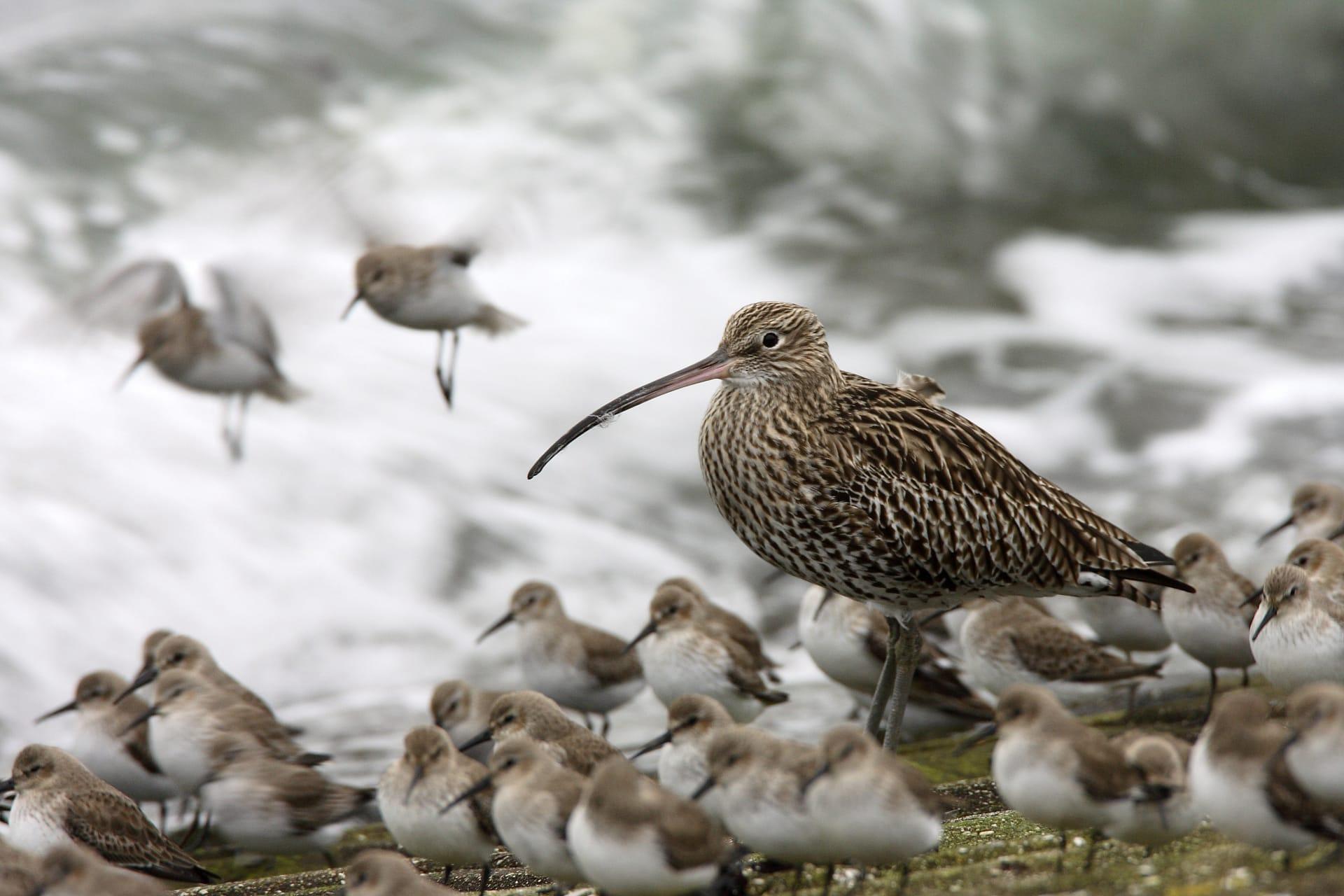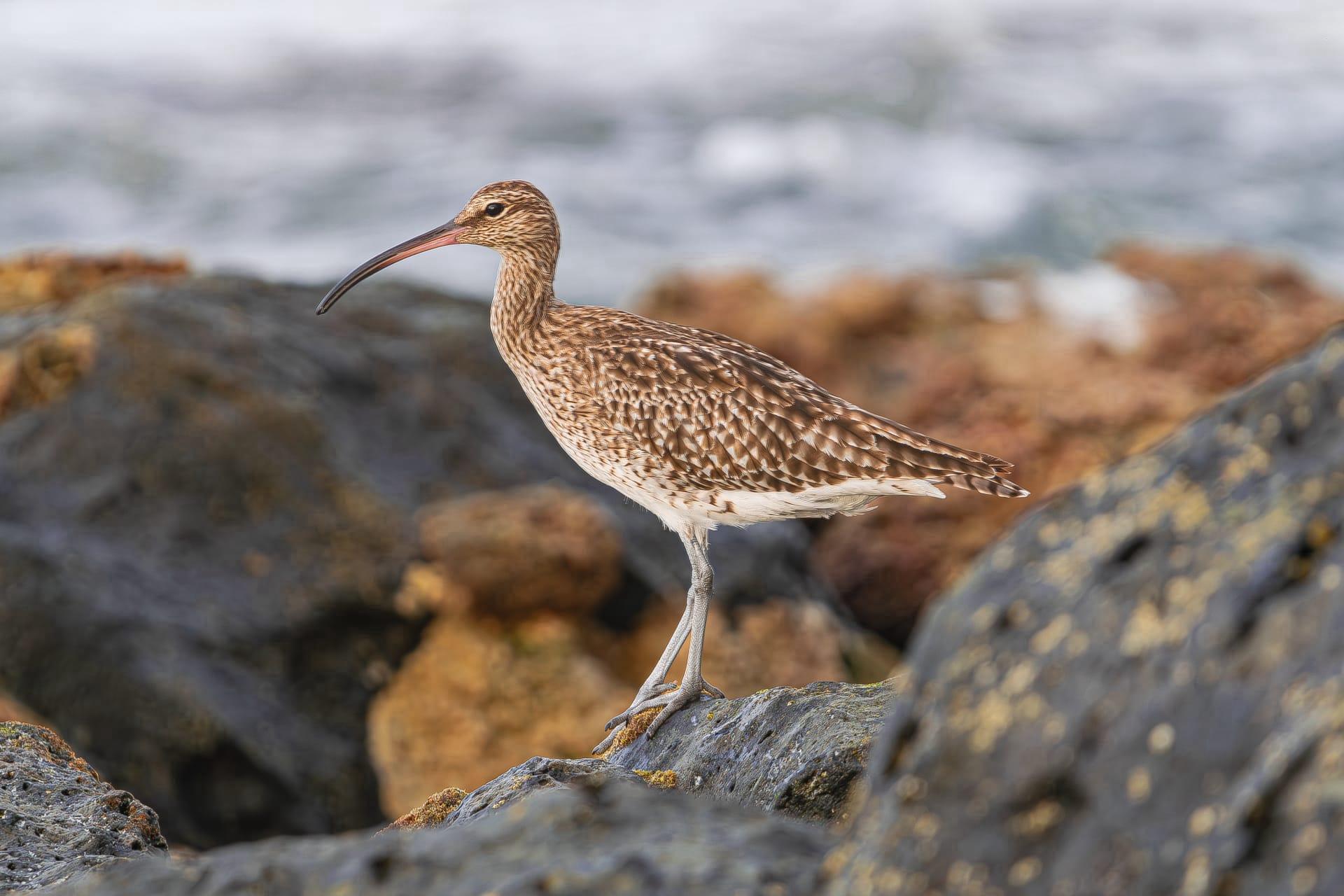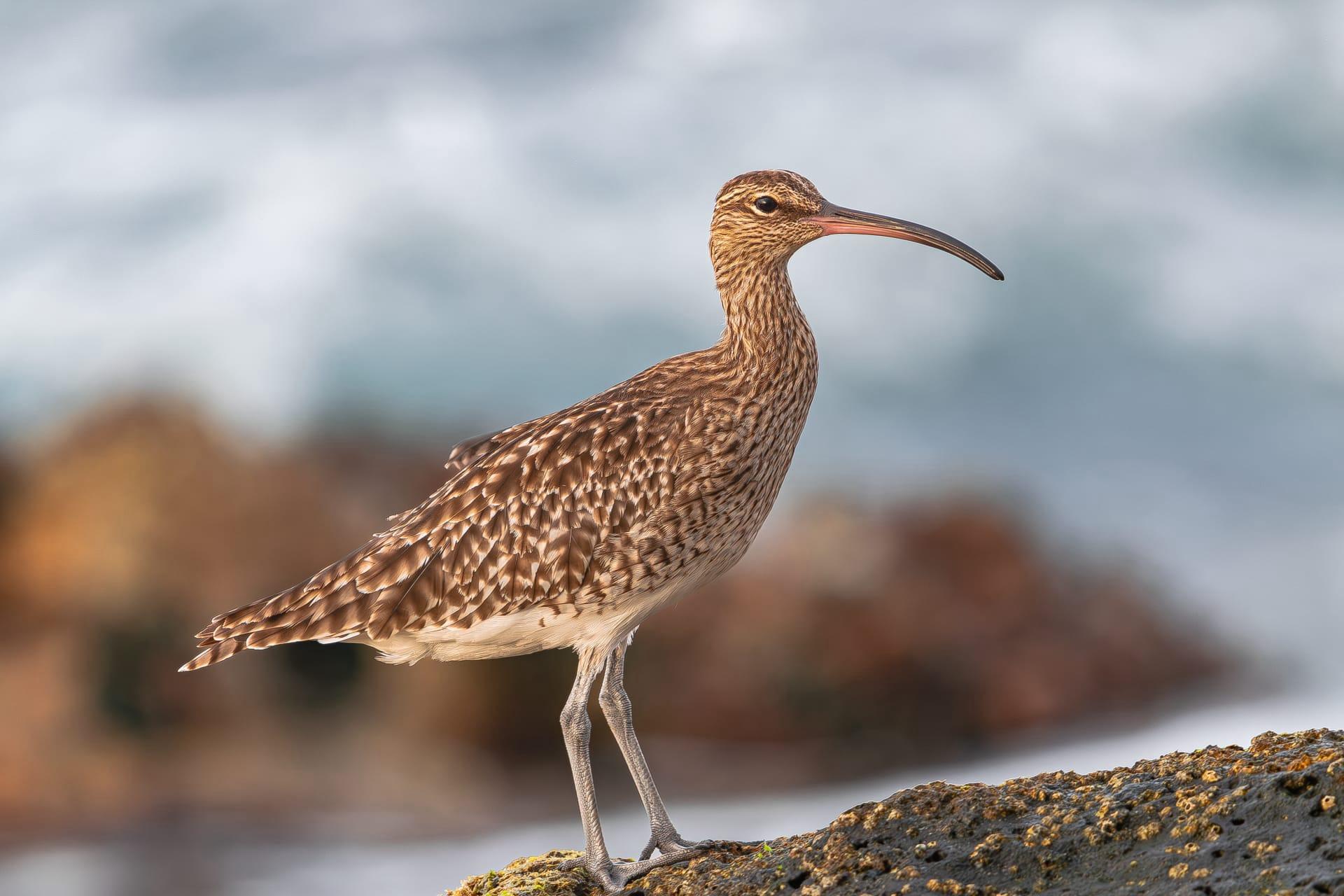Curlew Trivia
- Home /
- Trivia Question /
- Animal /
- Curlew Trivia
1
Question: How long is the bill of a curlew and what purpose does it serve?
Answer: Curlews are known for their extraordinarily long bills, which can be as much as 8.3 inches (21 cm) in length, depending on the species. This impressive bill is not just for show; it's a vital tool for foraging. Curlews use their long, curved bills to probe deep into sand and mud, extracting invertebrates like worms and crabs. The bill's sensitive tip helps them detect prey in murky environments.
Question: What is the wingspan of a curlew and how does it benefit their flight?
Answer: The wingspan of a curlew can range between 24 to 35 inches (60 to 90 cm), varying among species. This expansive wingspan, combined with their streamlined bodies, enables curlews to be highly efficient flyers. They can migrate long distances with ease, some species traveling thousands of miles between breeding and wintering grounds. The broad wings also provide stability and agility during flight, essential for navigating through varying habitats.

2
Question: Do curlews migrate in large flocks?
Answer: A common misconception about curlews is that they always migrate in large flocks. In reality, their migration patterns can vary significantly. Some species, like the Eurasian Curlew, do form large groups during migration. However, others may migrate in small groups or even solo. Factors influencing their migration patterns include food availability, weather conditions, and habitat changes.
Question: Are curlews considered to be aggressive birds?
Answer: Contrary to some beliefs, curlews are not generally aggressive birds. They are typically shy and elusive, preferring to avoid confrontation. During breeding season, however, they can become more territorial and may display aggressive behaviors, such as loud calls and aerial displays, to protect their nests and young. This protective behavior is often mistaken for general aggression.

3
Question: What kind of habitats do curlews prefer?
Answer: Curlews are versatile birds when it comes to their habitat preferences. They are commonly found in coastal areas, especially mudflats and estuaries rich in food sources. However, they also inhabit grasslands, moorlands, and even arid regions. The Eurasian Curlew, for example, breeds in upland moors and grasslands, while the Long-billed Curlew in North America favors prairies and agricultural fields for nesting.
Question: How do curlews adapt to different environments during migration?
Answer: Curlews exhibit remarkable adaptability during migration. They are able to adjust their feeding habits based on the available food sources in different environments. For instance, in coastal areas, they mainly feed on marine invertebrates, while in inland areas, their diet shifts to insects, small reptiles, and seeds. This dietary flexibility is crucial for their survival during long migratory journeys across varied landscapes.

4
Question: What is the lifespan of a curlew in the wild?
Answer: Curlews can have a relatively long lifespan for birds, with some living up to 20-30 years in the wild. However, this varies among species and is dependent on environmental factors. Predation, habitat loss, and human disturbances are significant threats that can reduce their lifespan. Conservation efforts are crucial in ensuring these elegant birds have safe habitats to thrive in.
Question: How do curlews communicate with each other?
Answer: Curlews use a variety of vocalizations to communicate. Their calls include a distinctive, melodious 'cur-lee' sound, which is where their name originates. During the breeding season, their calls become more frequent and varied, used for attracting mates and signaling danger. They also use body language, such as posturing and wing displays, to communicate, especially during courtship and territorial disputes.

5
Question: What are the breeding habits of curlews?
Answer: Curlews are ground-nesting birds, often laying their eggs in simple scrapes on the ground. Their nests are typically well camouflaged to protect against predators. A clutch usually contains 3-4 eggs, and both parents participate in incubation, which lasts about 27-30 days. The chicks are precocial, meaning they are relatively mature and mobile shortly after hatching and are cared for by both parents.
Question: Are curlew populations at risk, and what are the main threats?
Answer: Sadly, many curlew species are experiencing population declines and are considered at risk. The main threats include habitat loss due to agricultural expansion and urban development, disturbance from human activities, and predation. Climate change also poses a significant threat by altering their migratory patterns and breeding grounds. Conservation efforts are essential to protect these birds and their habitats.